Saison 3
Après Culloden
octobre 2017
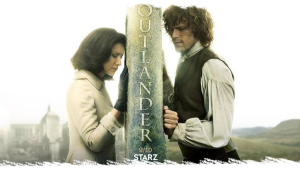
Texte original : https://www.bearmccreary.com/
Je ne pense pas avoir abordé une saison de télévision aussi enrichissante que la saison 3 d' Outlander . Séparés par des siècles dans la finale déchirante de la saison deux, Jamie et Claire passent les cinq premiers épisodes isolés dans leur propre chronologie, un voyage narratif qui s'étend sur deux décennies. Cette saison m'a permis de développer davantage des thèmes familiers et d'introduire de nouvelles mélodies, instrumentations et nuances dans la partition.
Une nouvelle saison d' Outlander ne serait pas complète sans une variante distincte de «The Skye Boat Song» pour son titre principal. J'ai introduit l'air dans la première saison, combinant l'instrumentation folk écossaise, l'orchestre et la voix de Raya Yarbrough. Au début de la deuxième saison, je l'ai réorganisée pour l'instrumentation baroque, tandis que Raya a interprété certains passages en français. Cela a été suivi d'une interprétation patriotique, mettant l'accent sur les caisses claires et la cornemuse écossaises, soulignant la préparation de la bataille de Culloden.
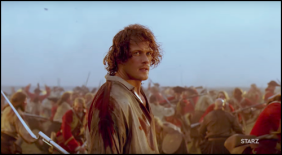
Après Culloden, le thème a encore changé et j'espère que «The Skye Boat Song» sera plus dramatique et introspectif. Au lieu de tambours entraînants, de percussions folkloriques ou de viole de gambe, la voix de Raya est soutenue par des cordes orchestrales éthérées et une harpe celtique. À l'apogée, j'ai dépouillé les percussions et la grande cornemuse des Highlands, pour représenter la défaite écrasante des Écossais à Culloden et annoncer de futurs voyages.
Mon processus de changement de titre n'était pas seulement soustractif, cependant. À son apogée émotionnelle, le titre de la troisième saison a une chaleur supplémentaire qui a été obtenue en introduisant une nouvelle couleur à la partition d' Outlander : les cuivres orchestraux. Un choral de cuivres de 4 cors, 5 trombones et 2 tubas, ajoute de l'ampleur et modernise de manière subliminale le son orchestral. Le laiton jouera plus tard un rôle majeur dans un nouveau thème important.
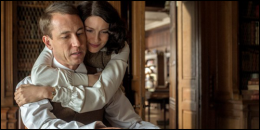
Les modifications que j'ai apportées au titre principal en haut de la saison sont relativement subtiles, même si les fans semblent avoir immédiatement remarqué l'absence de cornemuse plus que toute autre chose! Le changement est subtil de par sa conception, parce que… eh bien, il pourrait bien changer à nouveau dans un proche avenir.
* * * «La bataille » * * *
PRINCIPAUX SPOILERS À VENIR: Le premier épisode commence par une séquence de guerre brillamment construite, illustrant la bataille de Culloden à travers une série de flashbacks alors que Jamie est en train de mourir dans la lande. Il n'y a aucune musique pendant dix minutes, une décision qui a rendu l'entrée inévitable de la partition d'autant plus percutante. Des cordes orchestrales et des cornemuses rêveuses et réverbérées émergent du chaos au moment où Jamie voit Black Jack sur le terrain.
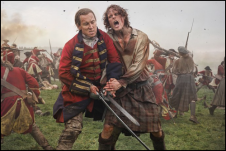
Ma partition pour la séquence qui suit a été inspirée par la mise en scène dramatique de la scène. Les lignes orchestrales se tissent avec de plus en plus de complexité, allant jusqu'au coup final et fatal de Jamie. Finalement, la partition retombe sur la voix solo de Raya: un accompagnement aérien et aérien à leurs mouvements épuisés. Plus tard, alors que Jamie est en train de mourir sous le cadavre froid de Black Jack, il a une vision de Claire qui s'approche de lui, pour laquelle j'ai utilisé un arrangement choral du thème des pierres.

Originaire de la séquence mémorable de danse druide du premier épisode , ce thème a représenté de nombreuses choses tout au long de la série, y compris la magie, le mysticisme, les voyages et le désir. Je l'ai beaucoup utilisé dans la saison trois, pour impliquer que Jamie et Claire ont une connexion inexplicable à travers le temps et l'espace. En fait, j'en ai composé deux nouvelles variantes pour le générique de fin de 301 et 302, chacune reflétant les émotions distinctes des moments de clôture de chaque épisode. (Le thème des pierres continuera d'évoluer au fil de la saison, finalement dans une direction assez surprenante.)
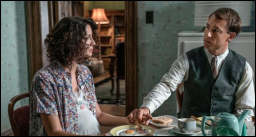
«The Battle Joined», comme les quatre prochains épisodes, fait des va-et-vient entre les histoires de Jamie et Claire, une structure narrative qui présente un défi pour la musique. J'avais déjà abordé cela avec la finale de la saison 2 , où j'ai choisi d'ignorer les différences de temps et d'espace, et à la place, je me suis efforcé d'unifier les deux récits avec une cohérence musicale.
Dans la troisième saison, j'ai modifié un peu plus les tonalités de leur musique respective. Pour l'histoire de Jamie, je me suis appuyé sur l'instrumentation folk écossaise, en particulier les petites cornemuses et le violon écossais. Le scénario de Claire présente des instruments d'orchestre plus traditionnels et un morceau occasionnel de musique populaire des années 1960 pour ancrer son histoire dans son époque.
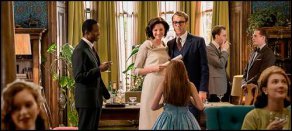
Au cours des trois premiers épisodes, nous suivons la vie de Claire à Boston dans les années 60, vivant avec Frank. Nous sommes témoins de leur mariage et finissons par nous dissoudre. Pour ces séquences de plus en plus déchirantes, je me suis fortement appuyé sur le thème Frank:
Le thème Frank remonte au premier épisode et est depuis lors un thème majeur. Inspiré par les variations de chansons folkloriques anglaises de Ralph Vaughan Williams, Gustav Holst et Benjamin Britten, j'ai utilisé la clarinette orchestrale pour représenter Frank, car elle évoque une sensibilité gentrifiée qui pourrait se démarquer des textures rugueuses et réédiques des instruments folkloriques écossais. Il y a une qualité douce dans le thème de Frank qui, je pense, résume son charme.
Certains de mes moments musicaux préférés dans la série sont les siens. Dans la première de la saison 2 , j'ai écrit une version follement lyrique de ce thème pour le montage où Claire décide de le rejoindre à Boston, en regardant ses vieux vêtements brûler. Ce passage était dans mon esprit lorsque j'ai marqué la saison trois, non pas parce que j'essayais de l'égaler, mais parce que je m'éloignais de lui. Les déclarations de clarinette solo deviennent progressivement plus lentes et sont soutenues par un accompagnement orchestral plus fin. Au cours de trois épisodes, le thème de Frank évolue lentement vers sa représentation musicale la plus simple possible, représentant sa relation en ruine avec Claire.
Bien que «The Battle Joined» insiste sur Claire et Jamie, mon meilleur souvenir est d'avoir marqué la mort de Rupert.J'ai été inspiré par sa volonté de pardonner à Jamie et par la bravoure avec laquelle il a fait face à sa disparition.Rupert était l'un des derniers survivants du cadre mémorable de guerriers des Highlands de la saison 1, alors j'avais l'impression que nous disions au revoir non seulement à lui, mais à nos jours les plus innocents àCastle Leoch .
C'est peut-être cette nostalgie de ces premiers épisodes qui m'a inspiré à souligner ses derniers moments avec «The Highland Widow's Lament». J'ai utilisé cette chanson folklorique traditionnelle écossaise à plusieurs reprises, en l'associant aux sacrifices consentis par les Écossais dans leurs batailles pour la liberté. Je l'ai utilisé pour la première fois en 105, «Rent », lorsque Claire et ses compatriotes découvrent et enterrent des guerriers crucifiés des Highlands au bord d'une route. Je l'ai utilisé à nouveau en 201, «Through a Glass Darkly», quand Jamie montre ses cicatrices à Jared, pour le convaincre que sa croyance en la cause jacobite est authentique. La chanson a été entendue pour la dernière fois dans la finale de la saison deux, quand un violon solo mélancolique a sapé les prétentions vantardes de Bonnie Prince Charlie de victoire imminente, nous rappelant la connaissance inquiétante de Jamie d'un avenir sombre.
Le moment où j'ai utilisé cette chanson qui a brûlé ma mémoire plus que toute autre était en 210, «Prestonpans». Rupert se réveilla pour voir qu'Angus venait de mourir, et serra son épée contre sa poitrine de chagrin. J'y ai cité «La complainte de la veuve des Highlands», et je ne l'ai jamais oublié.
Dans la première de la saison 3, Rupert est à nouveau entouré de compatriotes saignants, mais c'est à son tour de faire face à la mort. Un violon solo présente «La complainte de la veuve des Highlands» une fois que Rupert dit à l'officier anglais qu'il souhaite être tué ensuite. Alors que Rupert se lève, donne son nom et sort, le violon est accompagné de cordes orchestrales aérées et pleines de suspens. Ce n'est qu'après avoir entendu le coup de feu hors écran que l'arrangement orchestral se développe, ajoutant des violoncelles profonds et des basses pour soutenir la belle progression d'accords de la mélodie.
* * * "Abandon" * * *
Bien que les chansons écossaises aient toujours été une partie importante de ma partition d' Outlander , il y a un morceau bien connu que j'ai toujours aimé et qui n'a jamais semblé approprié d'inclure: «Scotland the Brave». Les mélodies les plus connues que je cite dans Outlander remontent à des centaines d'années, avec des mélodies souvent antérieures à leurs paroles. «Scotland the Brave», cependant, est différent. La première version connue ne date que de 1911 et ne s'est solidifiée en tant que chanson patriotique qu'au début des années 1950, lorsque les paroles ont été écrites par un journaliste écossais du nom de Cliff Hanley. J'ai toujours pensé que cela ne pouvait pas exister dans la partition d' Outlander car aucun personnage de la série n'aurait jamais pu l'entendre.
Cela a changé dans le deuxième épisode de la saison, "Surrender". Maintenant, à la fin des années 1960, Claire rencontre un joueur de cornemuse solitaire dans le parc qui joue cette chanson; à ce moment-là, il était devenu l'hymne national non officiel de l'Écosse. Bien que je n'étais pas sur le plateau quand ils ont tourné cette scène, j'ai pu réenregistrer cette performance de cornemuse et sélectionner la chanson, et j'étais ravi d'inclure enfin «Scotland the Brave» dans Outlander .
«Surrender» m'a également donné la chance d'explorer l'instrumentation écossaise par d'autres moyens. Dans l'épisode, Jamie vit dans les bois au-delà de Lallybroch, devenant une version sauvage de son ancien moi. J'ai représenté ce changement en m'appuyant sur l'instrumentation rustique qui a toujours fait partie de la partition. J'ai demandé à mes interprètes de jouer avec une interprétation plus lâche, de laisser les cordes et les archets devenir plus rugueux et moins polis. J'ai reculé sur l'utilisation de l'orchestre pour l'arc de Jamie ici, à l'exception de quelques moments essentiels vers la fin.
* * * «Toutes les dettes payées» * * *
Un de mes épisodes préférés absolus de la série à ce jour, «Toutes les dettes payées» m'a donné la rare chance de soutenir une histoire épique avec un nouveau thème de personnage. J'ai repoussé les limites toujours croissantes de l'instrumentation de la partition et, comme si cela ne suffisait pas, j'ai également écrit la déclaration finale et définitive sur l'un de mes thèmes Outlander préférés .
La carte du titre principal de l'épisode fait allusion au nouveau son à venir, alors qu'un cor français solo cite le refrain final de «The Skye Boat Song». Cela marque la première utilisation importante d'un instrument de cuivre dans la partition, mais ce n'est qu'un héraut de ce qui est à venir. Le cor est le principal instrument du thème le plus important de l'épisode, le thème John Gray:
J'ai été inspiré par le conflit central entre John Gray et Jamie, qui évolue au fil de l'histoire. Le caractère unique de cette relation et mon penchant pour le personnage m'ont dit que John Gray aurait besoin de son propre thème. J'ai écrit pour le cor solo parce qu'il apporte noblesse et honneur. De plus, la simple utilisation d'un instrument à cuivres fait que le thème de John Grey se démarque instantanément, car c'est le premier thème de la série à le faire.
Les scènes de John avec Jamie étaient alimentées par un motif d'orchestre 12/8, un riff que j'appelle le John Gray Ostinato:
Cette texture était utile, car elle est plus subtile que la corne, et ajoutait de l'intrigue et du mystère pour souligner l'intrigue secondaire sur le trésor de l'île des Silkies. Le thème John Gray culmine lorsque John libère Jamie, cimentant leur relation et leur respect mutuel. Je voulais soutenir cet épisode avec un sentiment de grandeur et aider à souligner les thèmes importants du défi, de la confiance et de l'honneur. Ce thème, je l’espère, a réussi à cet égard.
Pour contraster ces lourds passages orchestraux, j'ai suivi le scénario de Claire avec un son de plus en plus clairsemé. Ici, sa relation avec Frank a évolué jusqu'à son point de rupture. J'ai soutenu leur distance émotionnelle en utilisant la plus petite quantité d'informations musicales possible. Je n'ai pas ressenti le besoin d'ajouter du drame aux scènes, en partie à cause des performances époustouflantes de Caitriona et Tobias. Au lieu de cela, j'ai souvent utilisé un peu plus qu'une clarinette solo jouant le thème de Frank pour renforcer subtilement l'idée que ces deux personnes bien intentionnées se dirigeaient vers une calamité émotionnelle.
Cette calamité se manifeste finalement à la fin de l'épisode, lorsque Claire apprend sans avertissement que Frank est décédé dans un accident de voiture. Pour la scène dans laquelle elle visite son corps, j'ai décidé de prendre le Frank Theme dans une nouvelle direction créative. Cette mélodie avait été si étroitement associée à leurs luttes conjugales qu'il semblait inapproprié ici de revenir soudainement à la façon dont elle sonnait auparavant.
Au lieu de cela, j'ai expérimenté un langage harmonique plus moderne, pour donner à la scène un sentiment d'intemporalité. J'ai utilisé un piano (un instrument qui, à ce jour, n'a été entendu que sur le thème de Faith) pour créer des accords lents et édifiants. Après avoir posé les fondations des cordes et du piano, j'ai ajouté la clarinette solo et les violons supérieurs, sur une déclaration triste du thème Frank. Cette déclaration de Frank Theme sert de serre-livre musical pour l' arc narratif de deux saisons «Boston» , faisant référence musicale à mon signal préféré en 201 quand il brûle ses vêtements et qu'ils déménagent à Boston.
Le générique de fin de l'épisode met en vedette la clarinette solo qui obtient une déclaration finale du thème Frank. Sachant que c'était la fin de mon voyage avec cette mélodie, je lui ai donné tout ce que je pouvais. Là où il est généralement exprimé dans le registre profond et réédique de l'instrument, je laisse ici le joueur jouer une octave plus haut, avec un ton doux et angélique. Quand j'ai écrit cette réplique, je n'avais même pas réalisé que j'avais des larmes coulant sur mon visage pendant des heures. C'était difficile de dire au revoir à un personnage que j'aimais et à un thème qui m'accompagnait depuis le premier épisode.
* * * À partir de * * *
La saison 3 continue d'évoluer, tout comme l'utilisation de la musique. Les producteurs et moi avons apprécié l'occasion d'utiliser de la musique d'époque pour les quelques épisodes restants se déroulant dans les années 1960, y compris une utilisation mémorable de l'emblématique «Batman Theme» de Neal Hefti. J'ai également été charmé par le choix de Ron Moore d'utiliser la reprise de Walk Off The Earth de «A Hard Rain's A-Gonna Fall» de Bob Dylan, car c'était la deuxième fois que je me souviens qu'une reprise contemporaine de Dylan se terminait dans une émission qu'il avait écrite.
Dans les deux derniers épisodes se déroulant dans les années 1960, j'ai développé plus de matériel musical pour Roger et Bri, même si je n'ai toujours jamais cimenté un thème solide pour leur relation. Je suis convaincu qu'ils finiront par finir avec un thème musical distinct, mais le moment n'est pas encore venu pour l'introduire.
Dans des épisodes récents, j'ai introduit un thème pour Willie Ransom, toujours joué sur un hautbois solo. J'ai choisi le hautbois, et j'ai écrit pour lui dans son registre supérieur, car sa texture de roseau est similaire à celle des tuyaux Uilleann qui représentent souvent Jamie, mais plus petite et plus enfantine.
Willie ne sera pas le dernier nouveau personnage à avoir un thème cette saison. Fergus recevra bientôt un nouveau thème, pour soutenir sa relation avec un personnage en particulier. En fait, nous rencontrerons rapidement de nombreux nouveaux accompagnateurs, dont plusieurs se retrouvent avec des thèmes musicaux distincts.
En écrivant pour Outlander , j'ai le privilège de composer des thèmes pour des personnages mémorables que j'adore. Quand ils éprouvent de la joie, je la vis dans mon écriture. Quand ils meurent, je ressens un vide personnel, sachant que mon temps à développer leurs thèmes est terminé. Ma partition évolue avec leur parcours dramatique. Jusqu'à présent, la saison 3 m'a permis de repousser les limites de la partition, mais le plus grand changement musical à ce jour est encore imminent. Ce blog, je vais le garder pour un autre jour.













